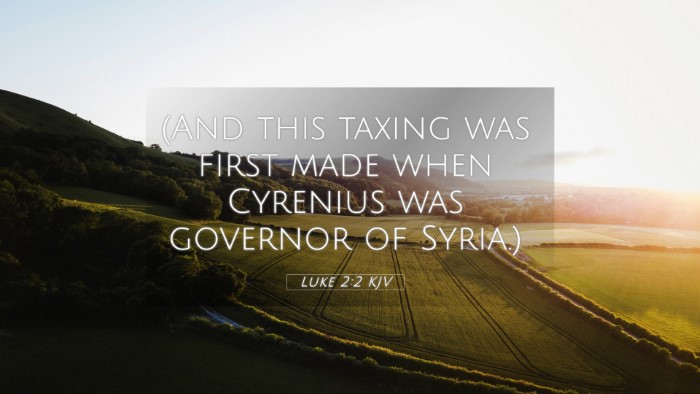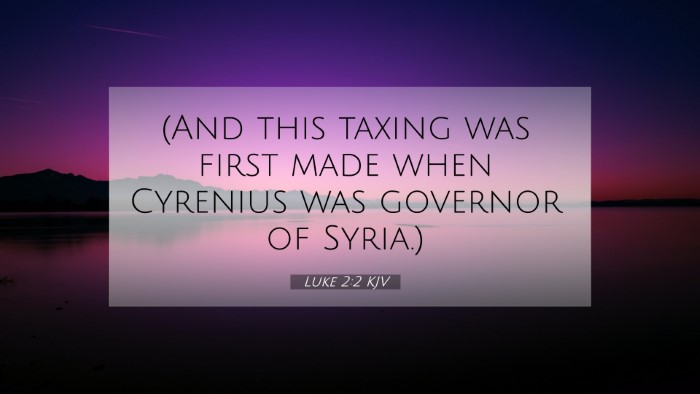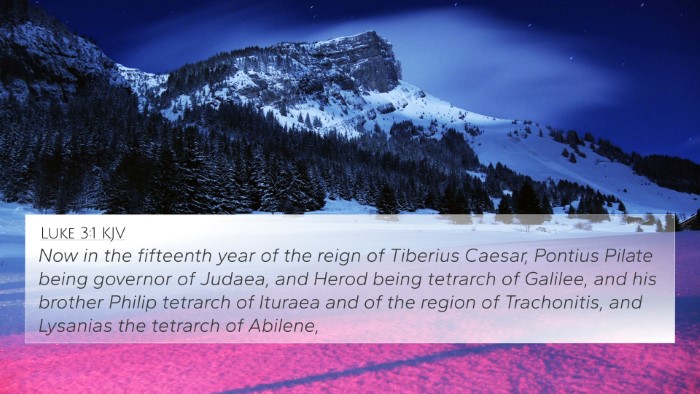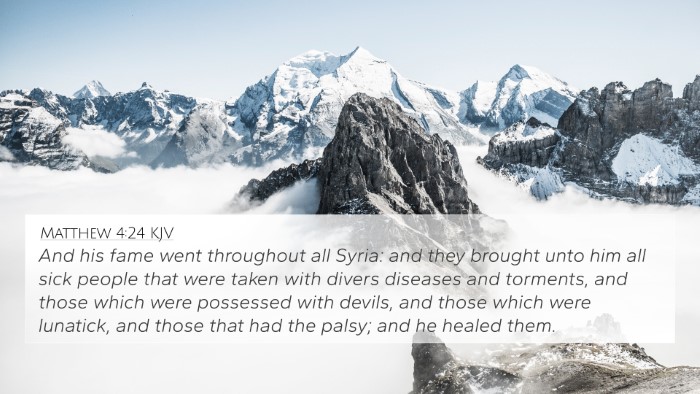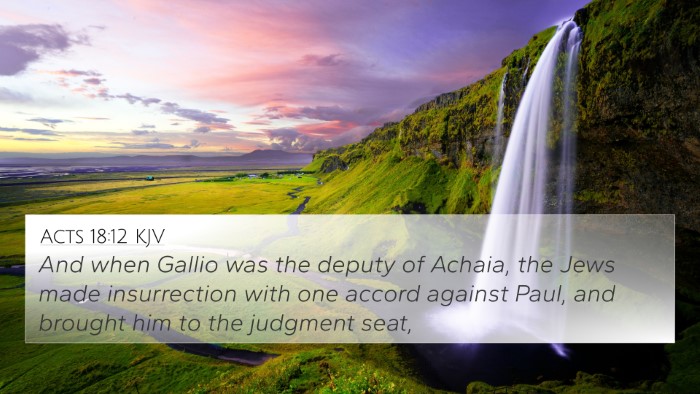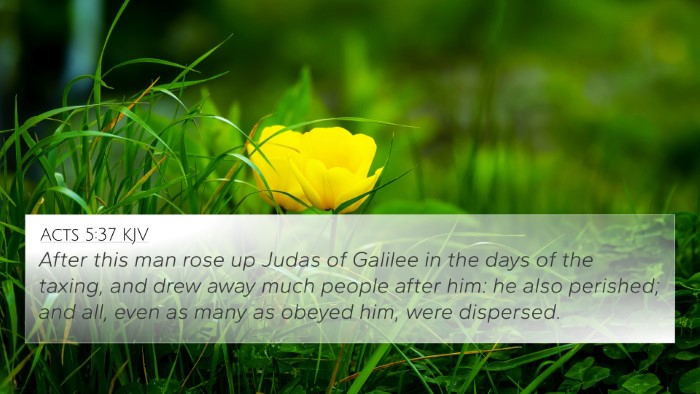Understanding Luke 2:2
Luke 2:2 states: "This census took place while Quirinius was governor of Syria." This verse is part of the narrative describing the birth of Jesus Christ and serves to anchor the chronology of this significant event in the historical context of the time.
Context and Significance
This verse emphasizes the historical accuracy of the Bible, grounding the story of Jesus's birth in a specific political and administrative context. By mentioning the census and the governor, Luke establishes a timeline that is verifiable against historical records.
Insights from Commentaries
Matthew Henry
Matthew Henry emphasizes that this census had a divine purpose. It was used by God to fulfill the prophecy of Micah 5:2, which foretold that the Messiah would be born in Bethlehem. Henry notes that God can use secular events to accomplish His will.
Albert Barnes
Albert Barnes focuses on the political implications of this census. He explains that it was likely meant to register the population for taxation purposes, reflecting the Roman governance over Judea at the time. Barnes also connects the event to the prophetic nature of Jesus’s birth, which shows God's sovereignty over history.
Adam Clarke
Adam Clarke provides insight into the timing and administrative procedures of the census. He highlights that it was mandated by Augustus Caesar, indicating the widespread influence of the Roman Empire. Clarke also discusses the logistical aspects, such as the requirement for individuals to return to their ancestral homes, connecting the verse further to the narrative of Mary and Joseph traveling to Bethlehem.
Thematic Connections
This verse has profound thematic connections within the wider biblical narrative. Here are some key cross-references:
- Micah 5:2: Prophecy regarding the birthplace of the Messiah.
- Matthew 2:1: Reference to the same census event and the visit of the Magi.
- John 7:42: Discussion of the city where the Messiah should be born.
- Galatians 4:4: The fullness of time when God sent His Son, signifying divine timing.
- Romans 13:1: The authority of rulers and how they serve God's purposes.
- Exodus 30:11-16: Instructions regarding the census among the Israelites, showcasing God's concern for order.
- Acts 5:37: Reference to a historical figure who also led a census at that time, illustrating the political climate in Judea.
- Revelation 1:7: Christ's sovereignty over the nations, echoing His birth amidst the Roman authority.
- Isaiah 9:6-7: Prophecy concerning the coming of the Messiah and His kingdom.
Cross-Referencing Bible Study
Cross-referencing is a powerful tool for deeper understanding. It allows for an exploration of connections between various biblical texts and themes:
- Tools for Bible Cross-Referencing: Utilize a Bible concordance to find related verses.
- Bible Cross-Reference Guide: Employ guides to navigate thematic connections.
- How to Use Bible Cross-References: Engage in comparative studies.
- Comprehensive Bible Cross-Reference Materials: Utilize various reference resources available.
- Identifying Connections Between Old and New Testament: Look for parallels that illustrate God's continuous plan through both Testaments.
Conclusion
Luke 2:2 serves not only as a historical point of reference but also as a significant theological anchor that ties to various prophecies and teachings within the Bible. By examining the connections among verses, believers can gain a richer understanding of the narrative and its implications for faith and history.

